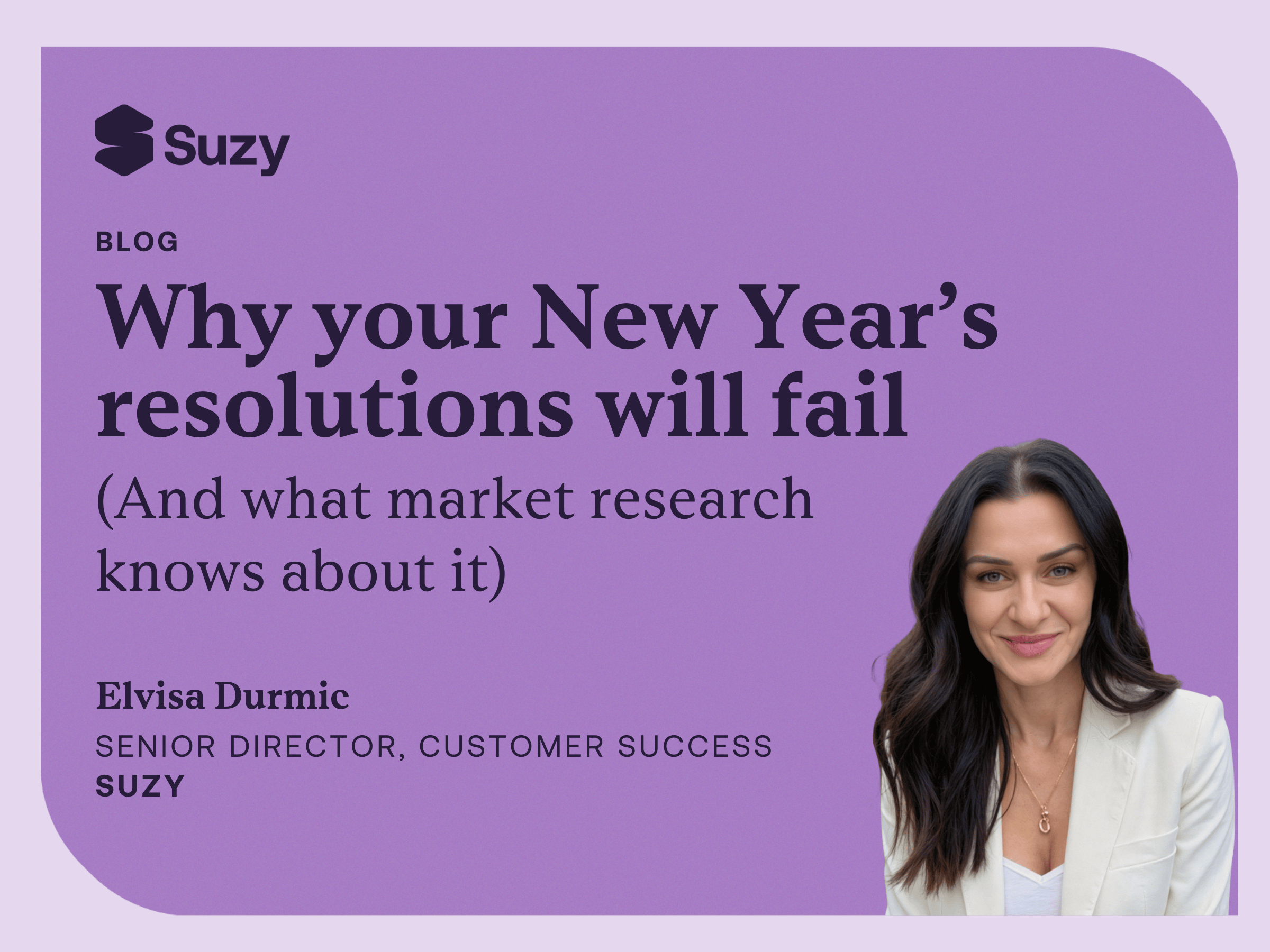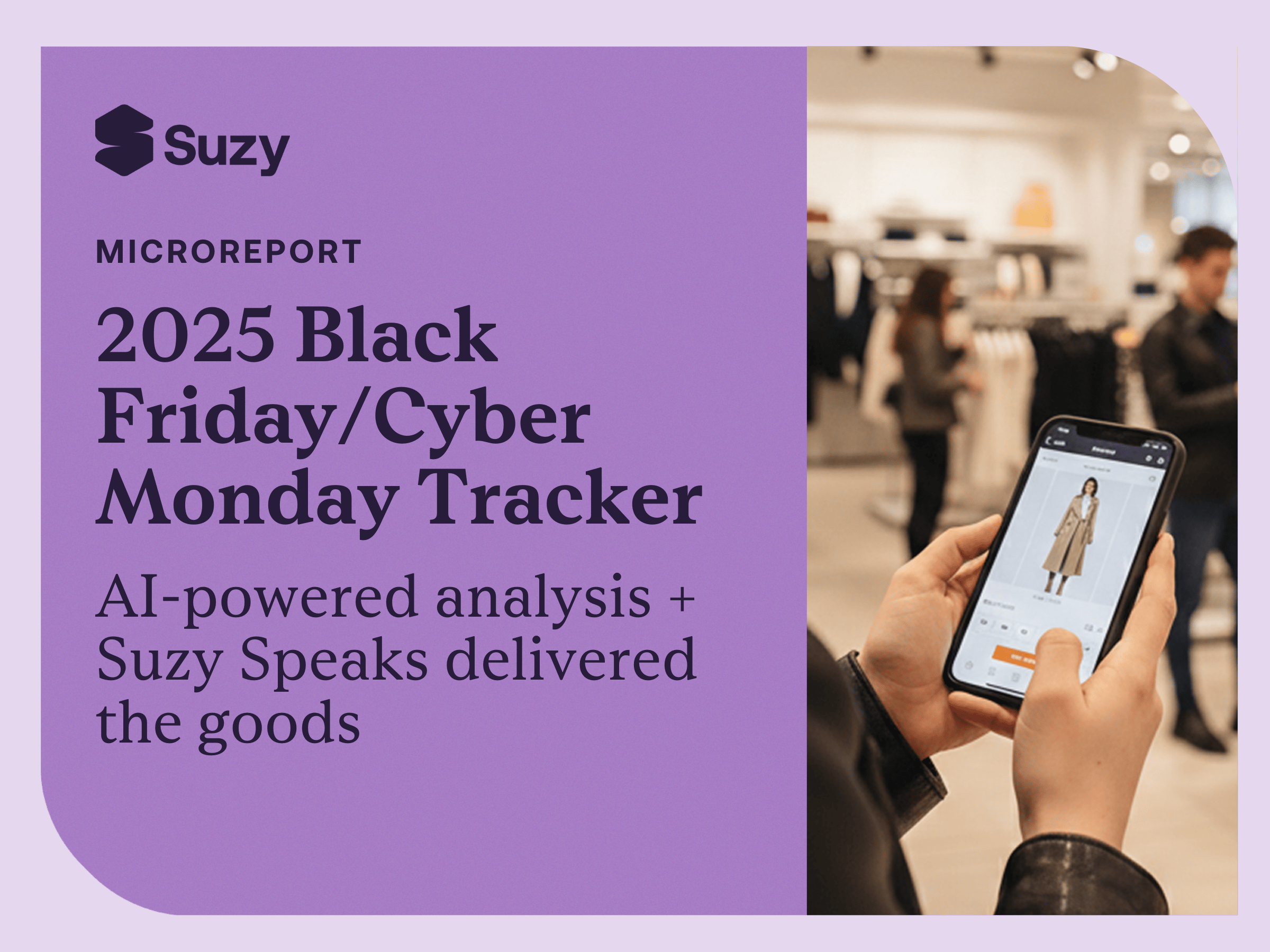How can emerging brands make a big splash? Consumer insights are the key.
By: Abby Kmetz, Head of Customer Success, SMB
When it comes to shopping—whether for groceries, makeup, or drug store essentials—I proudly embrace my status as an "End Cap Sucker." I can't resist exploring new brands on display with their vibrant packaging, fun names, and intriguing new concepts. Some of my latest favorite discoveries? MUSH Overnight Oats, Purely Elizabeth Cookie Granola, Tower28 Daily Rescue Facial Mist, and Monday Haircare Shampoo + Conditioner Sets. But how do brands like this capture my—and other consumers'—attention so effectively? Let's dive into how brands like these win shelf space and a spot in your shopping cart using Suzy.
How Emerging Brands Can Stand Out
Each year, approximately 30,000 new consumer products are launched by companies, including small and medium-sized businesses. However, launching a new product can be challenging, with only 40% of developed products making it to the market and just 60% of those generating revenue. The success rate for new products is quite low, with 95% of them failing shortly after launch.
In a rapidly evolving marketplace, emerging brands face unique challenges in establishing their presence, resonating with their target audience, and achieving sustainable growth. Consumer insights are the key to overcoming these challenges, providing the data-driven foundation needed to make informed decisions.
Before you let that discourage you, consider that the world’s most successful brands keep consumers at the heart of their every move. Take Warby Parker for example. Once a DTC startup, the brand revolutionized the eyeglass industry by offering consumers what was previously unavailable: affordable eye care. Now, Warby Parker is a publicly traded company worth 1.98 billion.
Or look at the explosive growth of Clif Bar. From starting off selling in bike shops in the 90s, the health bar brand was acquired by Mondelez in 2022 for 2.9 billion after creating and launching several other products that perfectly aligned with the rise in demand for healthier foods during the 2000s and 2010s.
Now, whether or not going public or getting acquired is one of your goals as an emerging brand, both of these brands have one thing in common: they delivered what consumers wanted. Whether it was trendy glasses you could order online or delicious energy bars to keep hikers, bikers, and everyday consumers powered up, these brands knew how to meet consumer needs.
But how do you know what consumers want? Consumer insights are the answer.
How emerging and challenger brands can use consumer insights for success
Consumer insights are valuable for every brand, including challenger and emerging brands. Here are three major ways to use consumer insights:
- To Understand Your Target Customer Base: A deep, foundational understanding of the customer base is critical for any emerging brand. By leveraging consumer insights, brands can develop a clear picture of who their customers are, what they want, and how they behave.
- Whether it be on-the-go breakfast consumers or beauty enthusiasts, it is imperative to meet your consumers where they are and create a product that fills a void for them.
- To Drive Innovation & Validate Creative: Innovation is at the heart of staying competitive in any industry. However, launching new products or creative campaigns without testing can be risky. Suzy’s platform provides brands with tools to test new ideas, products, and marketing creatives before they hit the market.
- From concept to packaging colors to naming, there are a million decisions a brand is faced with as they get started. Consumer insights are key to ensuring that new products make a splash and attract consumers.
- To Secure Retailer Sell-In: Securing retail shelf space is a significant challenge for emerging brands. Retailers are inundated with products vying for space, and they need compelling reasons to choose one brand over another. Consumer insights can provide the necessary data to make a convincing case.
- With Suzy, brands can find real shoppers who shop at a retailer and ask them about their needs, desires, and thoughts on new products. This arms emerging brands with data to walk into retailer conversations with confidence. Once shelf space is secured, Suzy’s advanced methodologies like TURF can help optimize the best combination of products to go to market with.
- One brand, Freestyle Snacks, used Suzy to nail their retail pitch. Using a mixed-methods approach, the brand studied target consumers with both quantitative and qualitative research. The owner was able to prove to retailers that consumers were excited and likely to purchase her product at their stores, which helped her secure deals with a club store.
Navigating the competitive landscape as an emerging brand can be daunting, but with the right tools and insights, it’s possible to carve out a successful niche. Consumer insights are a game-changer for emerging brands.
How Suzy can help emerging and challenger brands
Suzy’s platform is designed to help new brands entering established markets harness the power of consumer insights to drive success.
By providing a deep understanding of the customer base, enabling effective innovation and creative testing, and supporting compelling retailer sell-in pitches, Suzy empowers emerging brands to make data-driven decisions that lead to tangible business outcomes. Whether you want to understand your audience better, test new ideas, or secure retail partnerships, Suzy’s comprehensive research tools can help your brand succeed in today’s competitive marketplace.
For more information on how Suzy can help your brand leverage consumer insights to win, book a demo with our team today!
.webp)







